Foreign Insulators
by Marilyn Albers
Reprinted from "Crown Jewels of the Wire", April 2000, page 12
SEVEN NEW FOREIGN CD'S
TO SHARE WITH YOU THIS MONTH!
Collectors who have the book on foreign glass insulators (Glass Insulators
from Outside North America) will recognize the little unembossed CD 680 on the
left in the photo below. As you probably know, this style was found and used on
the Spanish island of Majorca. The insulator is only 2-7/8" in height with
a base measurement of 2-1/2" and an arm span of 2-3/4". Just for
comparison I've placed it next to a newly discovered insulator variation shown
on the right in the photo, which has similar measurements but it's 1/4"
taller and has a 1/2" longer arm span than the CD 680. Both insulators in
the photo are made of a light straw colored glass. N.R. Woodward has classified
this new little T-bar as CD 681.2. There is an embossed rooster on the front
skirt that looks like this  and just below it is the
and just below it is the  trademark for the
company in Portugal that produced the insulator --- Ricardo Dos Santos Gallo, Fol, Lda. The numbers
'4/2' that appear on the rear skirt probably indicate the size and/or electrical
capacity of the insulator and the dark area in the crown is caused by the metal
insert that remains in the pin hole. Many thanks to Ulrich Reiser of Stuttgart,
Germany, who found this insulator and was happy to share.
trademark for the
company in Portugal that produced the insulator --- Ricardo Dos Santos Gallo, Fol, Lda. The numbers
'4/2' that appear on the rear skirt probably indicate the size and/or electrical
capacity of the insulator and the dark area in the crown is caused by the metal
insert that remains in the pin hole. Many thanks to Ulrich Reiser of Stuttgart,
Germany, who found this insulator and was happy to share.
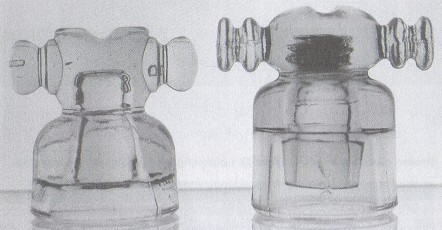
CD 680 and new CD 681.2
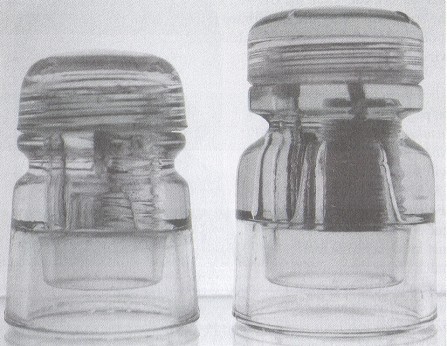
New CD 403 alongside familiar CD 402
We've known about CD 402's for quite some time. These insulators were made
and used in Italy and consequently brought back to the States by collectors who
found them attractive and unusual because of the threaded glass caps. Until now
we knew of only three embossing embossing variations to be used on the front
skirts of these straw colored glass insulators - 'MIVA', 'MIVAAQUI', and
'FLAMREX'. The word 'PYREX' is embossed on the rear skirts of the two MIVA
variations but only the letters 'TETI' and 'CAP' appear on the FLAMREX example.
Just recently I learned that this particular insulator style was made in a size
smaller than the CD 402 we are accustomed to seeing. The standard measurements
for CD 402 were approximately 4-3/4" in height with a base diameter of 3-1/8'" but
thanks to Guido Boreani of Milano, Italy, we've now seen an example that's only
4-1/4" tall with a base diameter of 2-7/8"! This smaller style has now
been classified as new CD 403. The word 'PYREX' and the date '1932' are embossed
on the front skirt with 'CAPOLINEA' (for 'terminus') on the rear skirt. The
glass color of this one is clear. Both the CD 402's and CD 403's serve as
terminals for drop lines. They are sometimes referred to as 'potheads' or 'dry
spots' because of the screw on glass caps that protect the electrical wiring
from wet weather.
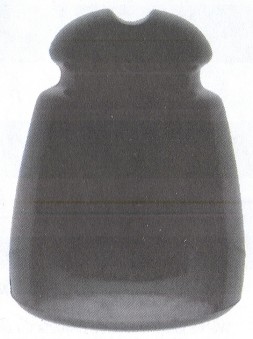
New CD 529.5
Take a look at CD 529 on page 105 in Glass Insulators from Outside North
America and you will see the familiar little CD 529 made by 'Folembray' of
France. But guess what? Guido has just introduced me to a much larger version of
this style and N.R. Woodward has classified it as new CD 529.5. This insulator
is 3-7/8" in height and has a base diameter of 3". It is a very thick
and heavy insulator for its size and as you can see, not much light comes
through the skirt, but this one in dark emerald green is just a beautiful piece
of glass. 'MIVA' is embossed low on the front skirt and 'T 8' appears in the
same location on the opposite side, so we're pretty certain that this insulator
was produced in Italy. The little CD 529 from France may have been part of a
special order for use on Italy's telephone lines.
CD 542's with their many embossing variations are plentiful in Italy. This
particular style has worked well on the telephone lines there. Older examples were made of a dark green glass but the more recent
ones are being found in a very light straw or clear 'PYREX' glass.
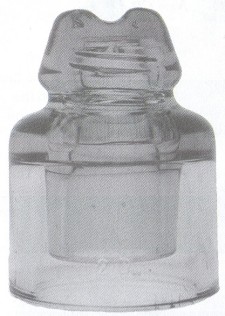
CD 542 in light purple
Then one day
not too long ago, I learned that some CD 542's had been made in light purple and
that was a real surprise. I wasn't aware that they existed in that color until I
saw a photo of one that was printed on one of Guido's 2000 Christmas calendars.
I was told that a small group of these were retrieved from an abandoned narrow gauge
electric railroad near Rome.
Embossed
on the skirt of the insulator is a small trademark shaped like a star with the
letters 'S F' in the center. '2 D' is embossed just under the trademark. Guido is
pretty sure the 'S' and 'F' stand for Societa Fidenza, for the Fidenza factory
that likely produced the insulators. I've often seen this trademark embossed on
the flat base of an Italian glass insulator but it was so tiny it was almost
impossible to read the letters inside the star, even with the help of a
magnifying glass. Now that I know what it is, it's much easier to make it out.
Nothing in the field of insulator collecting is ever boring! Something new comes
to light every time we turn around! Thanks, Guido, you have really been a big
help!
The next four insulators were made in France and brought back to the states
by Bernie Warren of Anchorage, Alaska.
CD 478 is an unusual looking insulator that was designed for use on low
voltage power lines. It was produced in France by the company known as L'Electro
Verre, which was located in Saint-Yorre, France. If you will look closely, you will see this name embossed low
on the skirt, but there is nothing on the opposite side. The insulator is 3-1/2" tall and has a base diameter of 3-1/8". The see through glass in
rich green aqua makes it a very attractive piece.
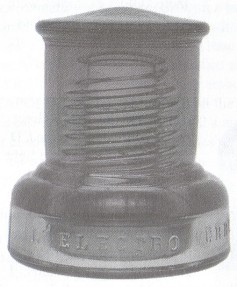
New CD 478
CD 380.5 is a cemented two-piece high voltage insulator that was produced by
ISOREX of France. The color of glass is a very deep emerald green. The insulator
is 5-1/2" tall and has a base diameter of 3-3/4". The top shell
measures approximately 6" across. 'ISOREX' is embossed on one side of the
shell with number '340' on the opposite side. 'ISOREX' is then repeated on the
lower portion but instead of '340', the number is '318'. Obviously, these numbers
identified the two separate parts of the insulator.
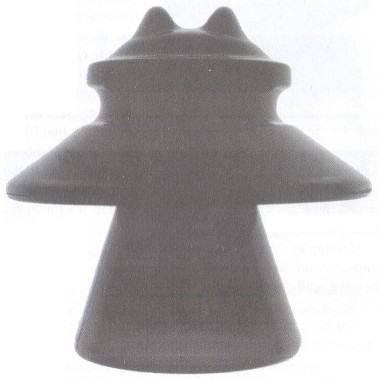
New CD 380.5
CD 537.2 weighs in at 3-1/4 pounds and was obviously made for high voltage
power lines in France.
'L'ELECTRO VERRE' is embossed low on the front skirt and
the number '45' appears in the same location on the opposite side. This
insulator is exactly 6" in height with a base diameter of 4-5/8". This
is It would also another attractive insulator in dark emerald green. It would make an excellent door
stop!
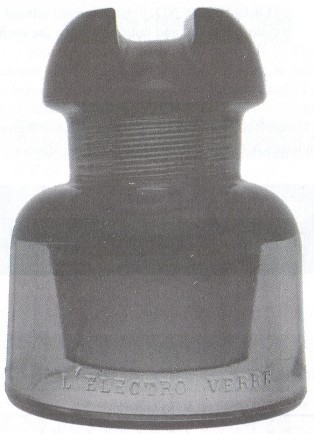
New CD 537.2
CD 1063.5 was manufactured in the town of Folembray, Department of Aisne, France. 'FOLEMBRAY NO.9' is embossed around the center hole of
the insulator. The top and bottom flanges are each 3-7/8" in diameter and
very flat, and this gives the piece a unique appearance after seeing so many of
the French "spools" with rounded crowns. The color of glass is bright
yellow green, which is typical of Folembray insulators.
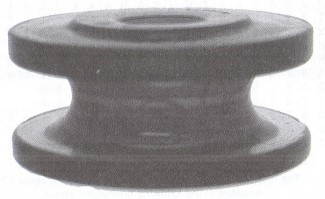
New CD 1063.5
Many thanks to Ulrich
Reiser, Guido Boreani, and Bernie Warren for sharing these insulators with Crown
Jewels of the Wire readers.
| 